One of the major challenges encountered in the maintenance of Puttenahalli Lake, JP Nagar is water weeds. Some months ago, the blog post “Grappling with Water Weeds” described the experiences of PNLIT in managing the weeds at Puttenahalli Lake, along with thoughts for the future. Read the full post here.
Weed control at Puttenahalli Lake is generally done by manual removal of weeds, though Biological control has been tried as well. Weed removal, if not done regularly, is expensive. Regular weed removal needs a regular labour force, which is difficult to get. Labourers and contractors are not interested in regular maintenance because it reduces their income. A once a year clean-up is several times more profitable to them than regular weekly/ fortnightly/ monthly weed removal.
Like Puttenahalli Lake, JP Nagar, other lakes (and lake groups) in Bangalore are also facing similar weed problems. One such group is the Yelahanka United Environment Association® (YUVA), which has taken the lead in the revival of Allalasandra Lake in Yelahanka New Town. Members were looking for ways to control the weeds at the lake when they got in touch with Dr Sushil Kumar, Principal Scientist, Weed Science Research Centre, Jabalpur, Madhya Pradesh. Dr Sushil Kumar’s areas of research and specialization include Biological control of weeds, Integrated weed management, Aquatic weed management, Problematic weed management.
On YUVA’s request, Dr Sushil Kumar visited 5 lakes around Yelahanka in North Bangalore – Allalasandra Lake, Puttenahalli Lake (not to be confused with the Puttenahalli Lake in JP Nagar), Ramagondanahalli Lake, Rachenahalli Lake and Yelahanka Lake.
To share his experiences and suggestions, Dr Sushil Kumar made a presentation ‘Management of Aquatic Weeds in Bengaluru’, on 1st March 2014, at BBMP’s Byatarayanapura office. Also present were Dr Dhanapal and Dr Sanjay (scientists from Weed Research Centre, UAS, GKVK, Bangalore) and Dr T.V. Muniyappa (Former President of Indian Society of Weed Science and Board Member of Horticulture Department, Govt. of Karnataka).
The presentation was held specially for Government and BBMP officials, and was attended by Mr B.S. Sathyanarayana (Honorable Mayor of Bangalore), Mr Virupaksha Mysore (Joint Commissioner of Yelahanka Zone), Mr Ramesh (Chief Engineer BBMP Yelahanka), other BBMP officials, apart from YUVA members Dr S.T. Tayappa (President), Mr C.N.Chandru (Vice President) and others.


The following were covered:
– Types of common aquatic weeds in India, methods to be used to control them, cost effectiveness and pros-cons of each option, and time duration for weed management
– Problems caused by aquatic weeds and the ecological menace
– Case studies of how aquatic weeds problems have continued to plague lakes in India
– Methods to manage the aquatic weeds problem
a. Physical control
b. Mechanical control
c. Chemical management
d. Bio control
e. Bio and Chemical control integration
– Successful cases of lake revival across various states in the country along with photos and methods adopted
– Management of the weeds in the 5 lakes visited in North Bangalore.
On the 5 lakes, Dr Sushil Kumar specifically spoke about the current state of the lakes and the option best suited for management of weeds at each lake.
Allalasandra Lake
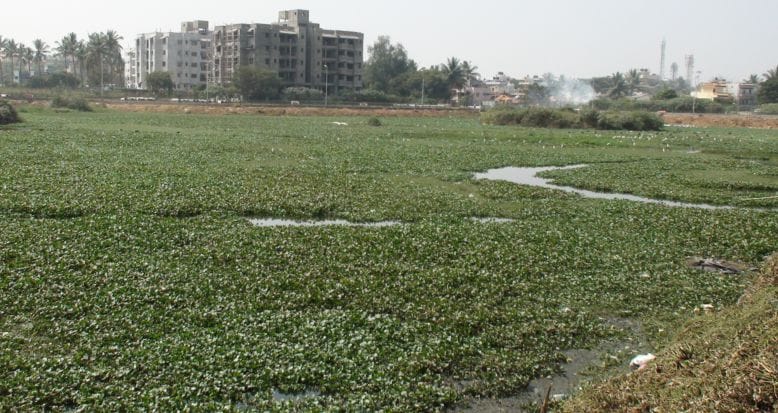
Allalasandra Lake, Nov 2013 – Overtaken by aquatic weeds
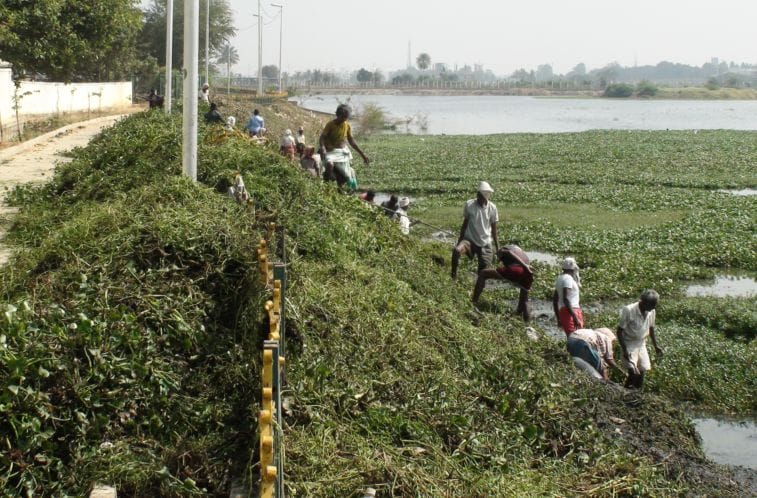
Manual weed removal at Allalasandra Lake, undertaken by BBMP Yelahanka Zone, Dec-2013 to Jan-2014

Allasandra Lake, February 2014 – After weed removal
Analysis by Dr Sushil Kumar
Restoration work is going on; Encouraging results but sewage entry needs to be blocked with immediate effect.
Time to time inspection is required to detect new emerging water hyacinth and alligator weed.
There should be immediate removal of newly emerged weeds to check further infestation.
Spot chemical treatment of alligator weed.
Weeds growing in the inlet stream should be removed immediately (these are the greatest source of seeds, inspite of putting mesh barriers).
Puttenahalli Lake
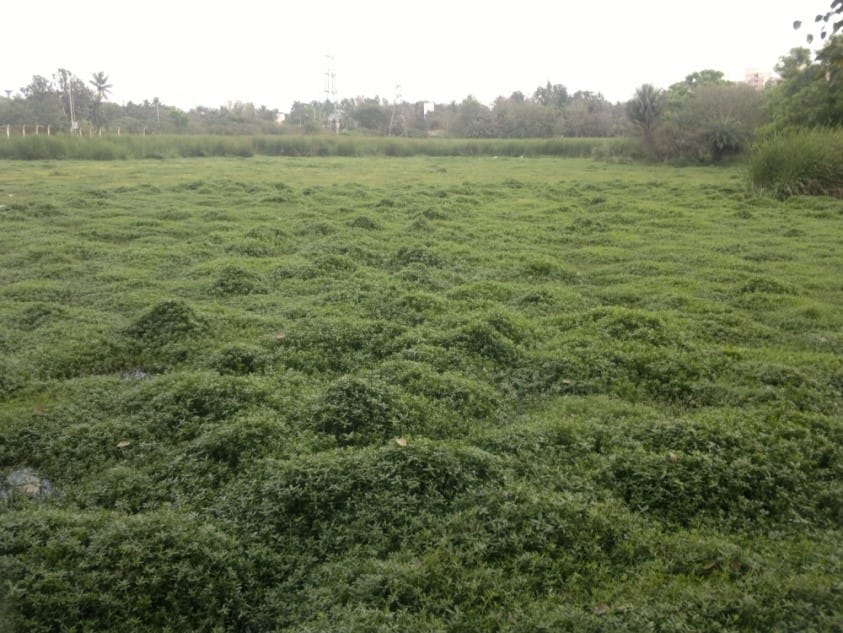
Puttenahalli Lake, Yelahanka – infested with weeds
Analysis by Dr Sushil Kumar
No water is visible.
Badly infested with alligator weed and typha angusta weed.
For quick relief: alligator weed removal is required at the earliest; After removal: spot herbicide treatment may be given on newly emerging weeds and remaining weeds to reduce labour cost.
Typha can be cut below the water surface instead of complete removal to reduce the cost and upper portion may be removed. The remaining root portion will be killed under submerged conditions; Later on, spot treatment of glyphosate may be done on regenerated shoots.
Sewage water entry should be stopped immediately.
Many species of birds were found visiting the site.
After removal of weeds, this may emerge as one of the good sites for many more species of birds in the city.
Ramagondanahalli Lake
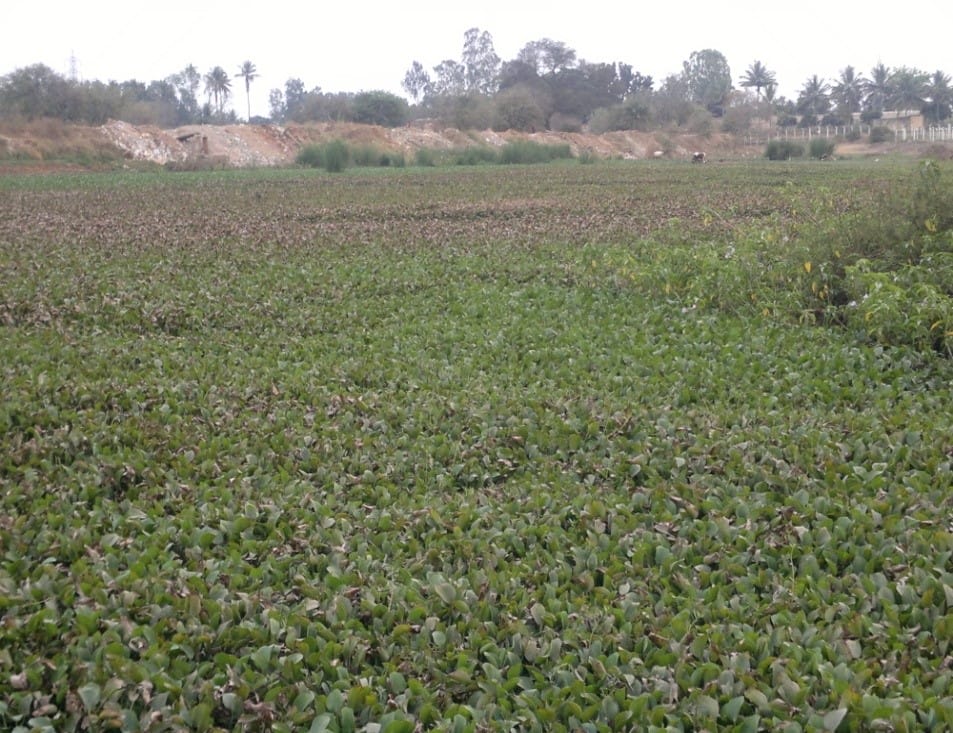
Ramagondanahalli Lake
Analysis by Dr Sushil Kumar
It is a shallow lake; water has drastically receded by February end.
Needs to be deepened and treatment done to retain the water.
Infested with water hyacinth and Ipomea.
Bioagent is working in the deep water but not effective in shallow water.
Rachenahalli Lake
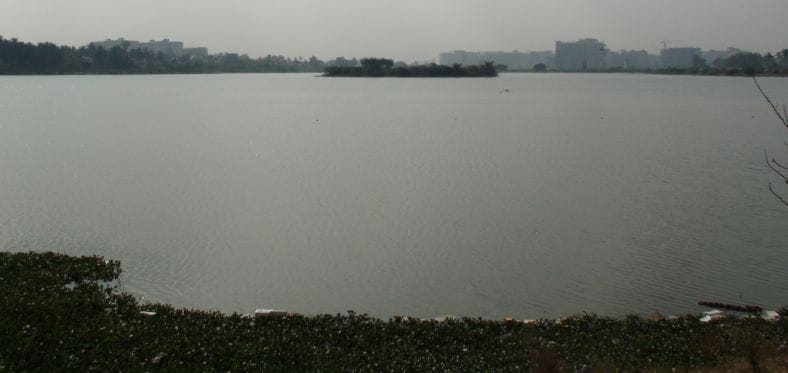
Rachenahalli Lake – Mostly clear water but water hyacinth growing in patches and spreading rapidly
Yelahanka Lake
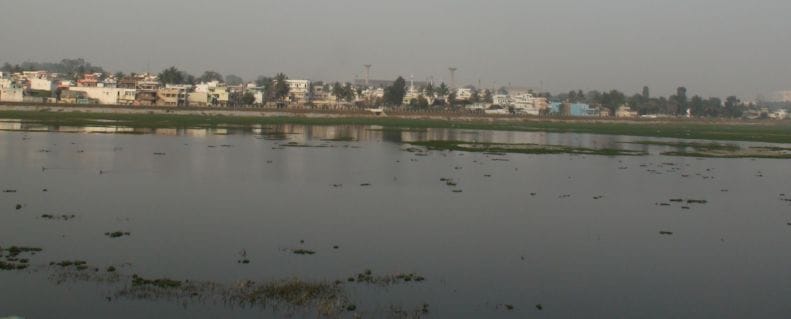
Yelahanka Lake, July 2013

Yelahanka Lake, February 2014 – Infested with alligator weed
Dr Sushil Kumar’s key message was: “After removal of weeds, spend Rs 5,000 every quarter for upkeep of the lake instead of spending Rs 50,00,000 for weed removal after a year”.
After the presentation, the Honorable Mayor promised to look into providing special grants for lake revival and development in Yelahanka Zone.
As more and more lakes are getting restored (with significant amount of expenditure) and given to citizens’ groups for maintenance, we need to find an effective, efficient, yet economical way to handle water weeds.
It may be worthwhile for the government agencies (or any private enterprising people) to invest in small water-weed management tools (that are not available in India but used extensively abroad) and larger weed harvesters/ pullers (either imported or Indian), that can be sold/ lent out to those managing lakes. With weed control set to be a major element of lake maintenance, a proper weed management agency (governmental or otherwise), that can help lake caretakers by providing labour, giving advice and devising strategies for effective weed control may become necessary.
Thanks to Jagadeesh Giri of YUVA for sharing the details of Dr Sushil Kumar’s visit. For more details, Jagadeesh can be reached at <jjgiri@yahoo.com>.